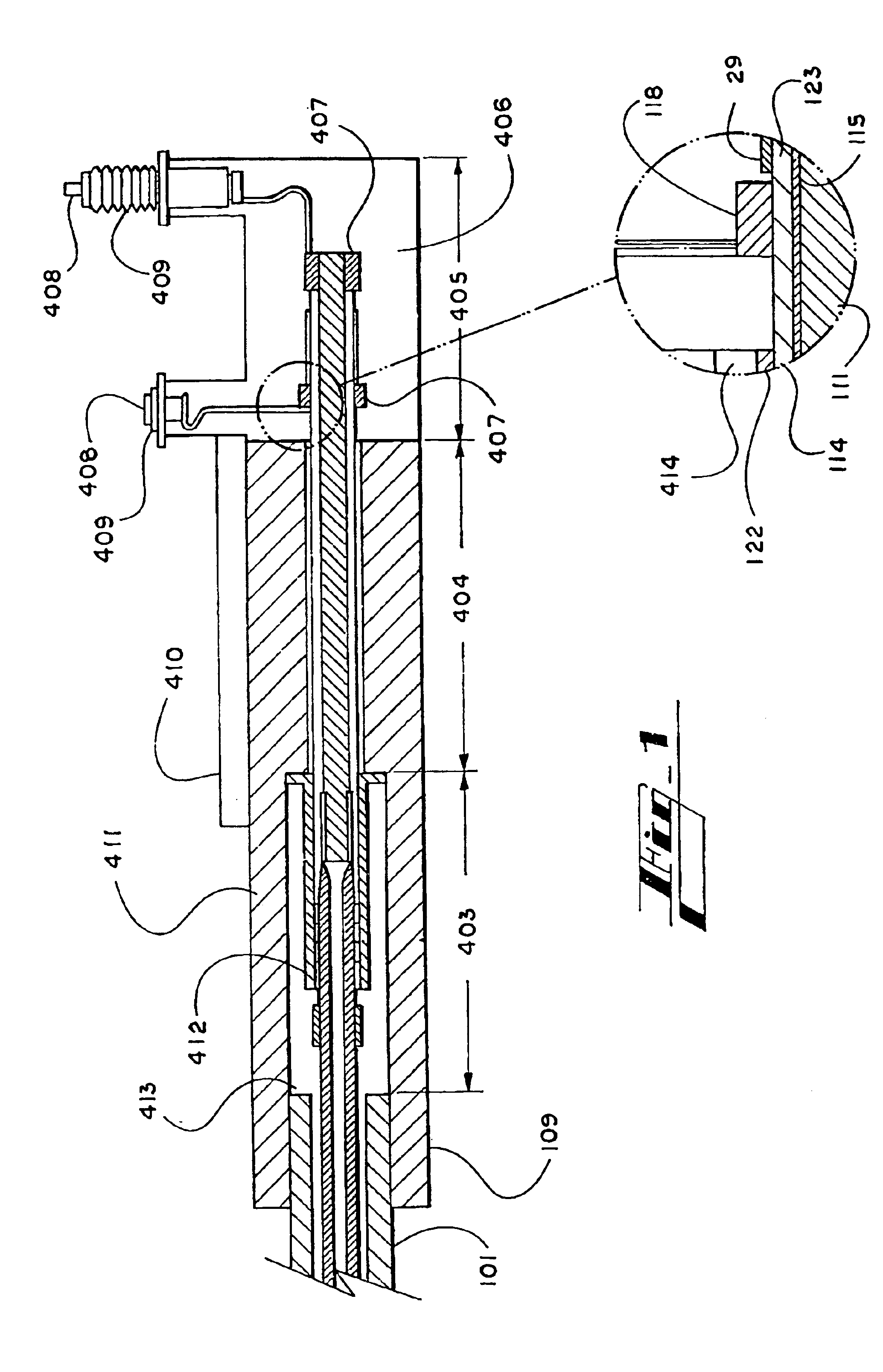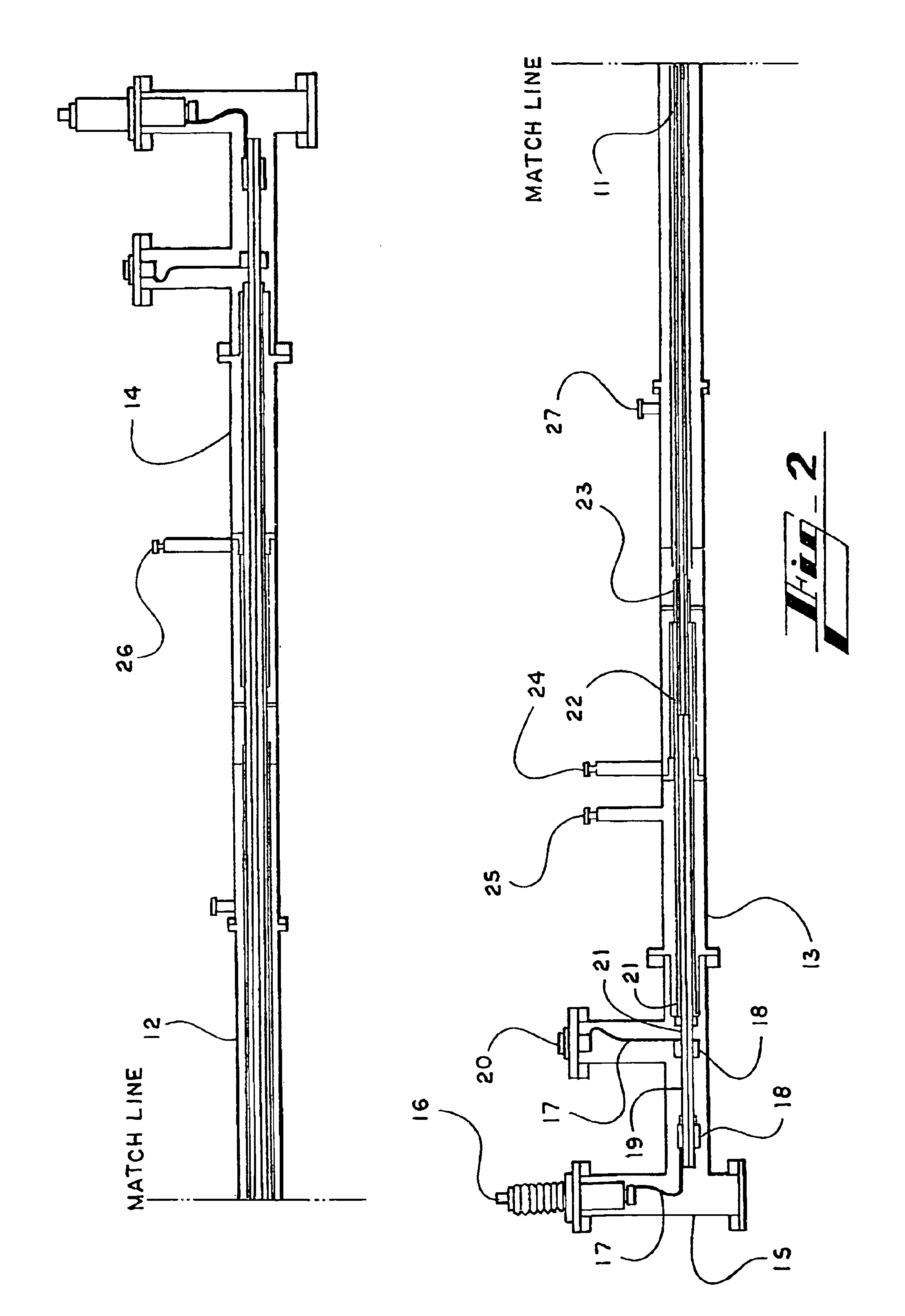Superconducting cable termination
a superconducting cable and termination technology, applied in the direction of superconducting magnets/coils, magnetic bodies, connection contact material materials, etc., can solve the problems of high stress, poor dielectric properties in the warm gaseous state, and complex terminations, etc., to achieve the effect of reducing radial heat leakage to the environment, increasing capacity, and high current density of hts conductors
- Summary
- Abstract
- Description
- Claims
- Application Information
AI Technical Summary
Benefits of technology
Problems solved by technology
Method used
Image
Examples
Embodiment Construction
[0036]While the exact design of the superconducting cable may vary, the embodiment of this invention described and illustrated here is for connecting a coaxial superconducting cable consisting of a superconducting center phase conductor and an outer superconducting shield conductor, to a pair of copper conductors that make utilization of the cable for electrical power transmission possible. The present embodiment is designed for continuous 1.25 kA operation at 7.2 kVAC operation and 110 kV BIL and has been operated continuously at 13 kVAC and withstood 120 kV impulse. The same principles can be used to design superconducting terminations and splices that have multiple phase conductors operate at different current and voltage levels.
[0037]FIG. 1 shows a schematic representation of the superconducting cable termination of the present invention. Referring to FIG. 1, superconducting cable 101 is shown in the conduit which is surrounded by termination conduit 109. Cold section 403 in ter...
PUM
| Property | Measurement | Unit |
|---|---|---|
| temperature | aaaaa | aaaaa |
| length | aaaaa | aaaaa |
| length | aaaaa | aaaaa |
Abstract
Description
Claims
Application Information
 Login to View More
Login to View More - R&D
- Intellectual Property
- Life Sciences
- Materials
- Tech Scout
- Unparalleled Data Quality
- Higher Quality Content
- 60% Fewer Hallucinations
Browse by: Latest US Patents, China's latest patents, Technical Efficacy Thesaurus, Application Domain, Technology Topic, Popular Technical Reports.
© 2025 PatSnap. All rights reserved.Legal|Privacy policy|Modern Slavery Act Transparency Statement|Sitemap|About US| Contact US: help@patsnap.com



